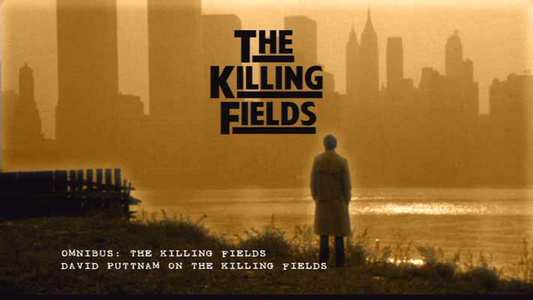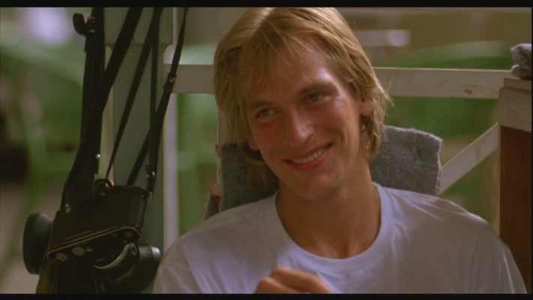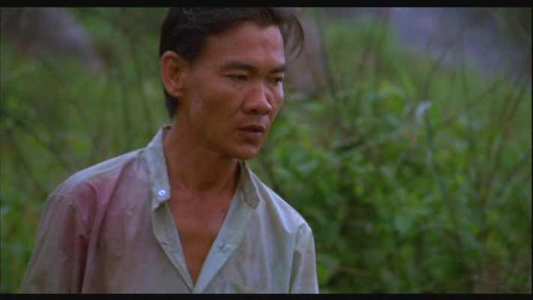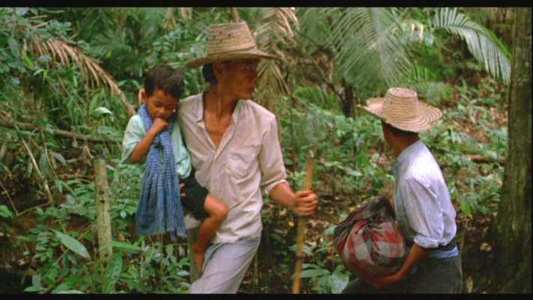Review of Killing Fields, The (Two Discs)
Introduction
The Killing Fields is the Oscar-winning true story of a unique friendship that existed between New York Times journalist, Sydney Schanberg (Sam Waterston) and his invaluable translator; friend and fellow hack Dith Pran (Dr Haing.S.Ngor) while covering the Cambodian civil war of 1970-1975.
Journalists in Vietnam, in particular, produced many powerful images and thought provoking stories that changed and ruined lives, inspired people to try and make a difference and turned ordinary journalists into celebrated heroes.
The Killing Fields tackles all these war-related developments and more.
It begins as Schanberg arrives in Pnohm Penh to rendezvous with Pran and cover America`s untenable position in the country, and the home spun battle for control of the capital city between General Lon Nol`s current administration and Pol Pot`s communist Khmer Rouge.
President Nixon has authorised the blanket bombing of Cambodia in a desperate effort to sustain Nol`s government and obliterate any National Liberation Front camps.
Schanberg is unhappy on arrival, as he believes he is having his movements restricted by the American military and that they are sanitising certain information - most notably the negligent B-52 bombing of village, Neak Luong.
He has a story to get to New York though and nothing`s going to stop him, not even when the Americans evacuate the American Embassy in Pnohm Penh and leave the country to the victorious, murderous Khmer Rouge killing machine.
No one is certain how this new regime is going to run things and Schanberg decides to stay on with a handful of other US, European and Australian reporters/photographers, and Pran - even though his wife and children have been evacuated to the US.
Things very quickly turn sour and the group are captured by the murderous, guerrillas, and are only freed after desperate, unrelenting begging and negotiating by Pran at the risk to his own life.
It`s clear that the country has become unsafe and they are forced to seek asylum within the French embassy, the only sanctuary recognised by the KR.
Things take another turn though as the KR demand all the Cambodians inside the embassy are handed over, an almost certain death sentence. Schanberg, photographer friend, Al Rockoff (John Malkovich) and British journalist Jon Swain (Julian Sands) desperately try to save Pran by forging a passport but fail, and the others, for not persuading their friend to leave with his family, blame Schanberg.
The events in the embassy let the audience see how strong and intoxicating the effect of war can be on a journalist and the desperate situations they will put themselves in to source a good story or picture.
It also leads nicely into the third part of the story - Pran`s desperate struggle to survive and be re-united with his family in America where Schanberg is half-heartedly receiving awards, blighted by his guilt and concern for his lost friend.
This is the most moving part of the story and Ngor illustrates Pran`s struggle brilliantly. He was awarded a best supporting actor Oscar for his performance even though he spends more time on screen than anyone else.
This is remarkable for two reasons. First of all, Ngor is actually a doctor and this was his debut screen performance, and secondly he is an actual survivor of Pot`s ethnic cleansing holocaust. Amazing because, the KR killed constantly and indiscriminately.
Everyone was marched out into rural camps and forced to work 14-hour days on a bowl of rice, and anyone showing the slightest bit of intelligence was viewed as a threat and executed or `re-educated` as the Khmer Rouge took the country to year zero. This meant Pran had to hide his identity and pose as a simple cabbie.
Schanberg doesn`t appear much in this part of the story but it`s easy to imagine how he feels, wondering if he could have done more or persuaded Pran to leave earlier.
Waterston portrays Schanberg throughout the film as a demanding, somewhat unlikeable character who often humiliates his friend, but not for one moment do you doubt his loyalty or concern for him.
Malkovich as Al, the maverick photographer is convincing but does not command enough screen time to be remarkable - a bit like everyone else involved in the film other than the two leads.
It is Waterston and Ngor who make the film and their characters` friendship is the most significant part of the storyline, but there is also a tale of consequence present and hope - the ending in particular is excellent and very emotional. I like the fact that Pran`s teeth have been made up to show the effects of long-term neglect and poor diet.
Directed by Roland Joffe and produced by David Puttnam, The Killing Fields is a great human-interest story from the golden age of war journalism, enhanced by the fact that it is actually true.

Video
The award-winning cinematography in this film is fantastic. It was actually filmed in Thailand and Canada but you certainly get the feeling for the country`s religious persuasion and what those bombed villages and fields of death must have been like. Filmed in widescreen the picture is very clear and the scenery fabulous, although it can be a bit patchy in the darker scenes. All in all though a good transfer.

Audio
The Dolby surround 2.0 stereo sound mix is clear in the film and there is a good film score by Mike Oldfield - very appropriate and 80`s sounding but it can be a little overpowering at times. John Lennon`s, Imagine, plays over the end sequence, which I thought was a nice touch, but the majority of scenes are filmed in silence.

Features
Disc 1
Other Releases
Theatrical Trailer
Audio and Commentary Set Up - Commentary by Roland Joffe
Disc 2
Omninbus -The Killing Fields - David Puttnam on the Killing Fields
This is a fantastic 1983 episode of Omnibus. It`s 53-minutes in length and features interviews with Sydney Schanberg, Dith Pran, Roland Joffe, David Puttnam and others. Narrated by author William Shawcross, it focuses on the film, "soon to be released" but there is also actual footage from Cambodia and the film being shot. A very worthwhile addition to the disc.

Conclusion
A very good film, not the most exciting war film on offer but that`s not the point. This is all about the great story and friendship between two like-minded people from very different cultures.
Your Opinions and Comments
Be the first to post a comment!